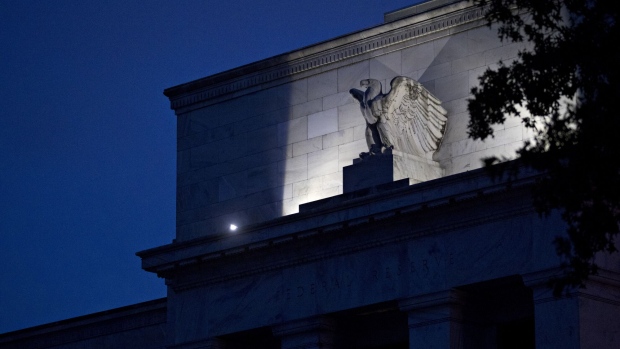Apr 10, 2024
Goldman Sachs Changes Fed Call to Two Cuts in 2024 From Three
, Bloomberg News

(Bloomberg) -- To see how hard it’s been for even Wall Street’s best and brightest to predict where the Federal Reserve is headed, look no further than Goldman Sachs Group Inc.
As recently as November, the bank’s team of economists led by Jan Hatzius was bucking the broader consensus by predicting that the Fed would cut its benchmark rate by just a quarter percentage point in 2024, given how strong the economy had been.
Then one month later, after the Fed signaled its was finally done hiking, Hatzius and his colleagues changed their call sharply, expecting five such reductions, with the first in March. One reason was because the six-month annualized rate in the Fed’s favorite inflation gauge had been moving toward the central bank’s 2% target — and they started trimming their rate-cut forecast as the disinflation trend began to reverse.
Now, with another higher-than-expected consumer price index jump causing a reset on Wall Street, Hatzius’s team — like others — revised its call yet again: They now expect only two cuts this year, with the first move coming in July, followed by another in November. That’s roughly what derivative traders are pricing in, too.
The Fed will “need to see the string of three firmer inflation prints from January to March balanced by a longer series of softer prints in subsequent months,” Hatzius and his colleagues wrote in a note shortly after the increase in the CPI topped economists’ forecasts for a third month in a row.
In an e-mailed response, Hatzius acknowledged that he was “whipsawed” by the “surprising deceleration” in inflation in the second half of 2023, followed by a “surprising re-acceleration” so far this year.
Hatzius said he’s not alone in getting the call wrong, pointing out that bond investors had to reduce their rate expectations from more than six cuts at the beginning of the year, to less than two now.
Goldman Sachs’s revisions track the broader struggle of analysts to predict the Fed’s path after the first big inflation wave in four decades, with traders also constantly recalibrating their bets as new data rolls in. On Wednesday, that was on display again, with stock prices tumbling and bond yields surging after the CPI release.
After policymakers started raising rates in 2022, traders consistently misjudged how far it would go — and kept prematurely betting on a rapid about-face, wrongly assuming the economy would snap under the onslaught.
On that front, Hatzius has been prescient. When most economists were predicting a recession in 2023, he argued that the Fed would bring down inflation by cooling the labor market without triggering a sharp rise in unemployment. That’s become a dominant view, now that the economy remains strong and the Fed is seen as done tightening policy.
--With assistance from Liz Capo McCormick.
(Adds Hatzius’s comments in sixth and seventh paragraphs.)
©2024 Bloomberg L.P.






